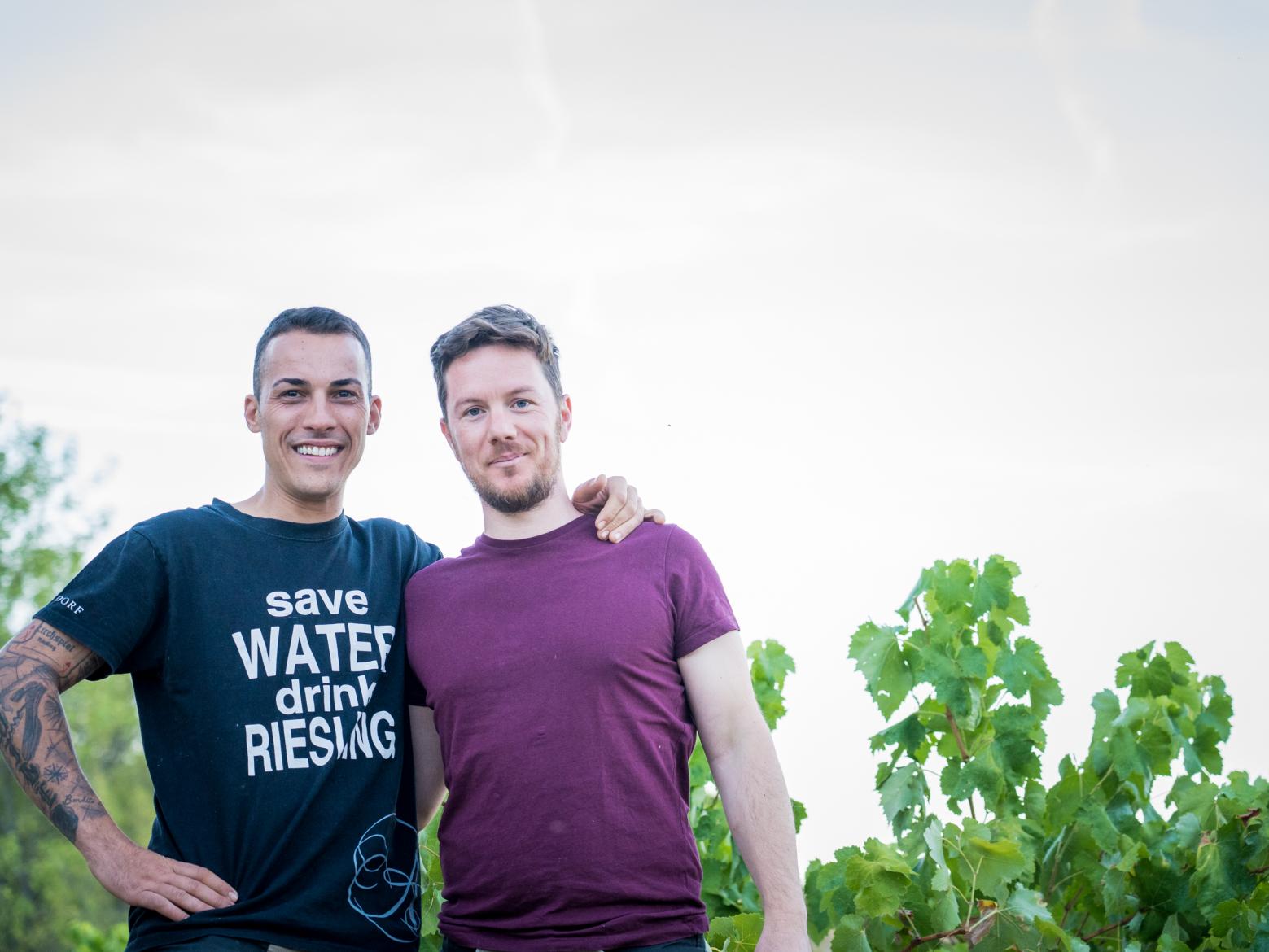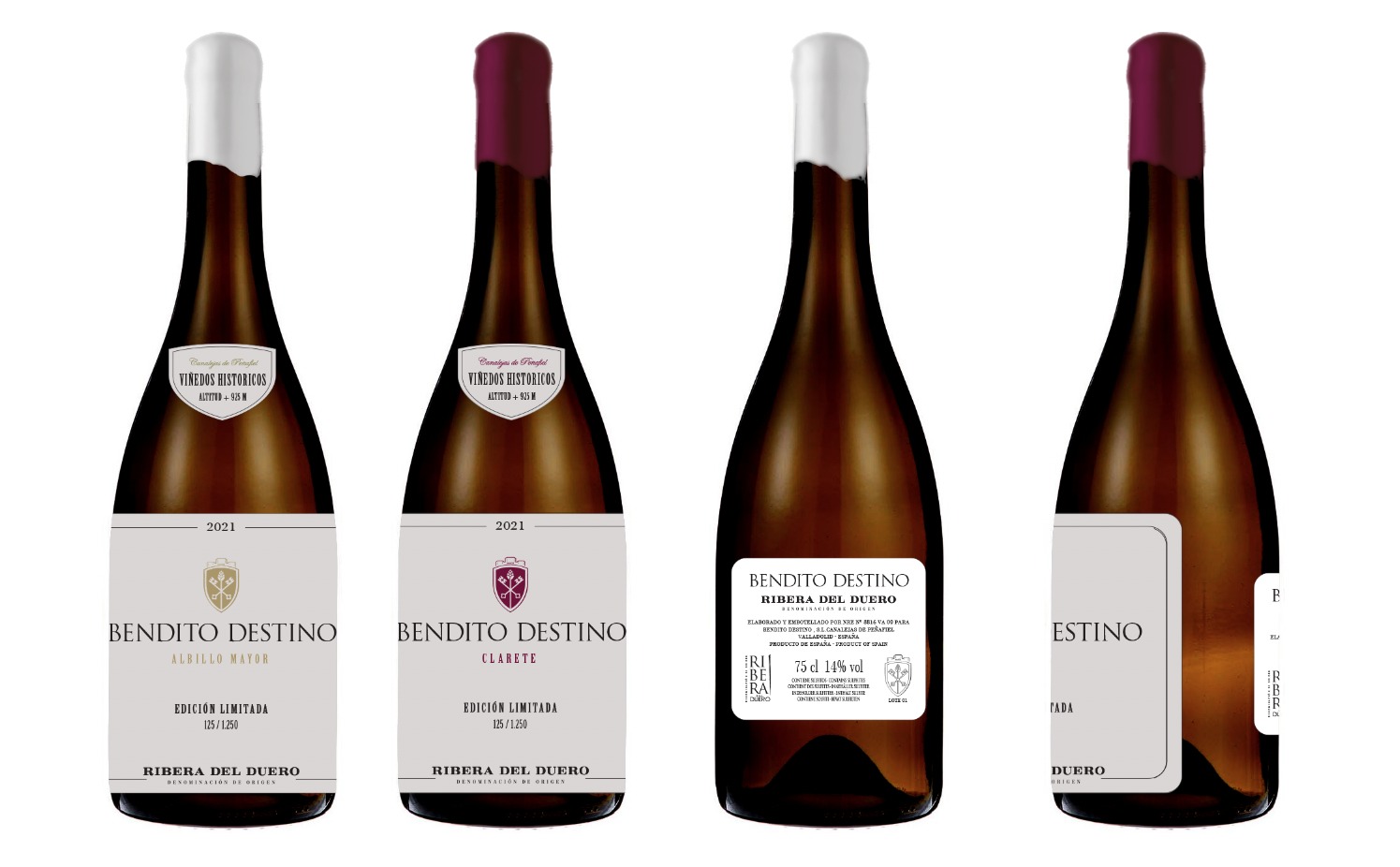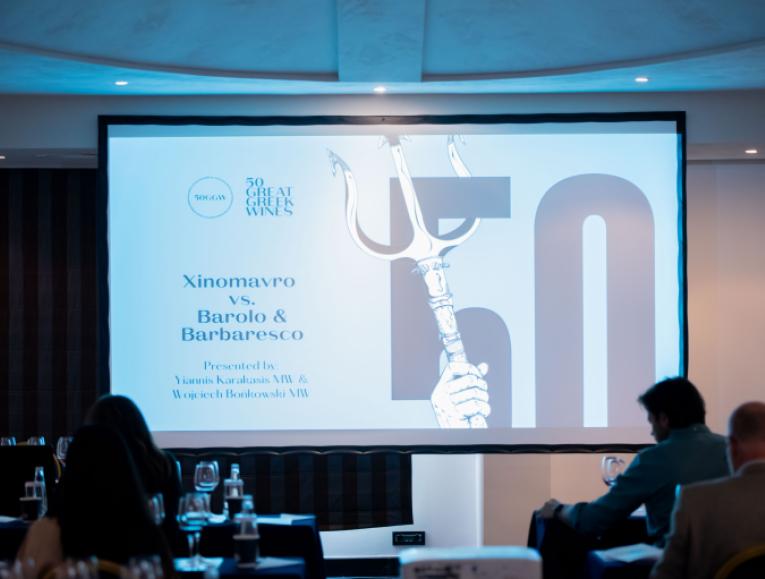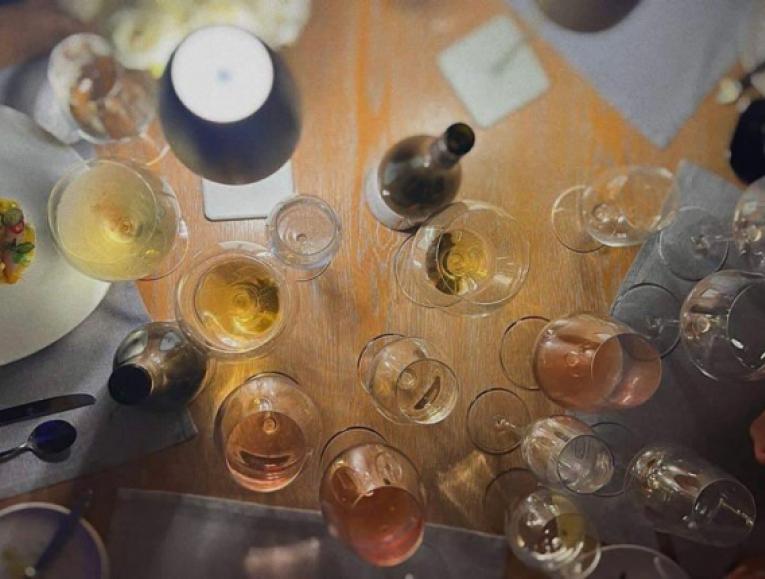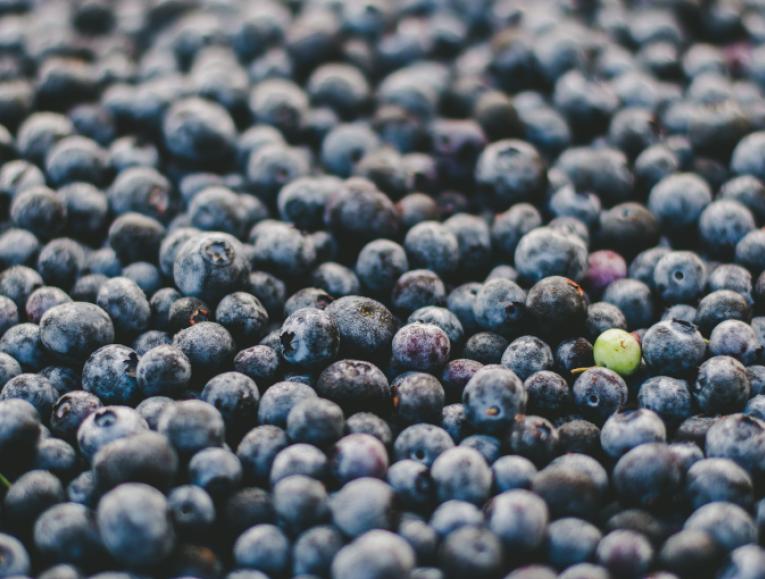Terry Kandylis, Guillermo Cruz Alcubierre and Bendito Destino
By Olga Antoniadou
We all have our secret fancies, and Terry (Kandylis) is one of mine. I only first met him in 2018 when I had written about a presentation Yiannis Karakasis, and he had organised ‘Yiannis Karakasis and Terry Kandylis: Concerto for Two Pianos’, and ever since, I’ve had my eye on him. So, last year, at the height of the pandemic, he told me he was going to Spain to make his own wine. My jaw dropped. I thought, ‘this young man can’t settle down! He is constantly looking to do something different. I got him to promise that he would tell me all about this new project, and here were are.
What happens when two top sommeliers decide to make their own wine? Well, we will just have to wait and see, but my gut feeling says it will be stunning. The story Terry gave me was that he was visiting his good friend Guillermo Cruz and they were strolling around Ribera del Duero in the village of Canalejas de Peñafiel of Castilla y León, enjoying their time together and wondering what else they would like to do with their careers when they stumbled across some old bush vines that seemed rather abandoned. The answer to their existential issues, almost divinely, appeared before them. They took a closer look, asked around and ended up buying just over 2ha of vineyards. They would make their own wine!
“The people here wondered why on earth we wanted these old vines. Their production is so low”, says Terry. “You see these were planted in 1921, 1936, and 1937, and some are over 100 years old. Imagine, some are own-rooted vines, although most were planted after phylloxera. Three of the plots we obtained were about to be uprooted. We couldn’t believe our luck. Our best plots are North facing. Mostly mixed plantations, although about 90% is Tempranillo. Among these we have found Garnacha, Bobal (Valenciano), Monastrell, Albillo, Jaen Blanco (Cayetana), Malvasia Riojana. These old vines have so many stories to tell, they have gone from generation to generation, you can’t just let them go”, he continues fondly.
Initially there was much work to be done. They had to clean the plots and winter prune. Ribera has a continental climate and the winter of 2020 saw much snow, dormancy, but in 2021 there were no spring frosts (which is a usual hazard in the area). The vineyards are at an average altitude of 925m, some below that and some above, on a limestone bedrock with chalk in many parts. The top soil differs, at places sandy at others clay, good drainage, dry farmed. An area that is characterised by the high diurnal variation, “in August we had day-time temperatures of around 37oC, dropping to around 20-22oC at night, which helped the fruit retain aromas and acidity”.
“Guillermo is very devoted to looking after the vineyard, although we do have a viticulturalist overseeing and consulting us. We farm organically and are looking into biodynamics. I have taken over the winemaking part a little more, because I am working for Mark (Andrew) and Dan (Keeling) at Noble Rot in London, so I can only be there at particular times of the year”.
2021 will be the first vintage they release. All of their wines are field blends, save one plot that is only Albillo (only one barrel made) and another that is only Garnacha (only one barrel made). Total production of their reds is about 8000 bottles, a blend will be released later this year, 4-5 single vineyards will be released in 2023. About 2500 bottles of Clarete (rosé). “The grapes came from 56 different plots. We bought in some grapes from growers, who we paid almost double what is given, because we want to be able to work with them long-term. I must say, though,” he smiles proudly, “our own fruit was the best. We want to stay small so as to be able to pay the attention we want to the farming of our vineyards. We believe less is more”.
In the vineyard they hand harvest at night and in the winery destem by hand, the clarete and albillo are foot trodden, all are basket pressed, sedimentation in tank, ambient yeast fermentations in open top barrel fermenters or concrete, for the reds some whole bunches and whole berries used in the fermentation process.
“The style of the wines in this area is mostly high extraction, overripe and usage of new barrels for maturation. We want the style of our wines to be quite different. We harvest our fruit ripe, with phenolic maturation, but we want the acidities and aromas. We will be keeping to the more historic way of doing things in terms of our fermentations, like fermenting the field blend all together, ambient yeast fermentations and so forth. We are also going to be using 2nd, 3rd and 4th use barrels, except for few 500lt barrels which are new from Francois Frères.
Our label is Bendito Destino, which means Blessed Destiny in Spanish, and our logo is a mix of historic elements that derive from the viticulture of the area. The two keys refer to the Burgundian monks of Cluny who brought ‘modern’ viticulture to the area. In the centre, the cone rod symbolises the thyrsus held by Bacchus in many murals and sculptures. Bacchus was also called Liber in Roman times, so all the more reason to include his thyrsus. The font used is called Trajan’s Font and refers to Trajan’s clolumn in Rome. We wanted to pay tribute to our historic vineyard and the fact that our wines are only made of old vines in classic styles”.
All I can say is I can’t wait to get my hands on these wines. He promised to send me a couple of bottles. I just hope he keeps his promises.
